|
Fisher
Body - Home
Fisher Body Craftsmanship Goes to War
Fisher Body - Craftsmanship
Fisher Body - Aircraft
Fisher Body - Aircraft
Instruments
Fisher Body - Guns
Fisher Body - Tanks
Fisher Body - Miscellaneous
The Plants
Fisher Body WWII Plant Database
Cleveland Plant #1, OH Plant
Cleveland Plant #2, OH Plant
Detroit Aircraft Unit,
Detroit, MI
Detroit Die and Machine Plant Fleetwood, Detroit, MI Plant
Flint Plant #1, MI Plant
Grand Blanc, MI Tank Arsenal
Grand Rapids, MI Plant
Lansing, MI Plant
Memphis, TN Plant
Ternstedt Manufacturing Division,
Detroit, MI
Grand Blanc Tank Arsenal Built Tanks and Tank Destroyers
Grand Blanc
built M4A2 Sherman Tank Photos
Grand Blanc
Built M4A3 Tank Photos
Grand
Blanc M10 Tank Destroyer Photos
The Fisher Body
Detroit, MI Plant # 18 / Fleetwood in World War Two
Detroit, MI
1917-1993
This page added 1-13-2024.
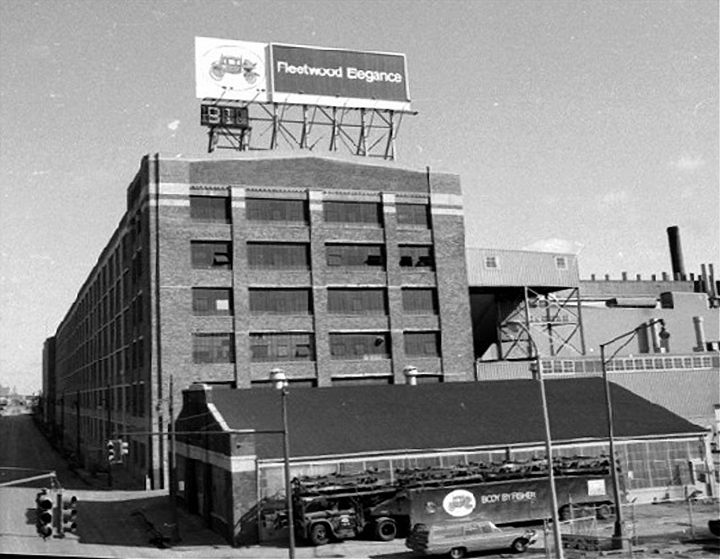
Fisher Body Plant 18 was not built to make
auto bodies as were the other Fisher Body plants. It was built in
1917 at the intersection of West Fort Street and West End Street in
Detroit, MI to produce aircraft for the American entry into World War
One. This plant was the predecessor of many factories built
starting 23 years later in 1940 for the production of war goods as the
country prepared for another World War. This six-story Albert
Kahn-designed building produced approximately 2,000 out of the 4,346
deHavilland DH-4s built under license in the United States. Later,
it would become known as the Fisher Body Fleetwood plant when it began
producing the bodies for the Cadillac Fleetwood. The plant stopped
production of bodies in 1984 and was razed in 1993.
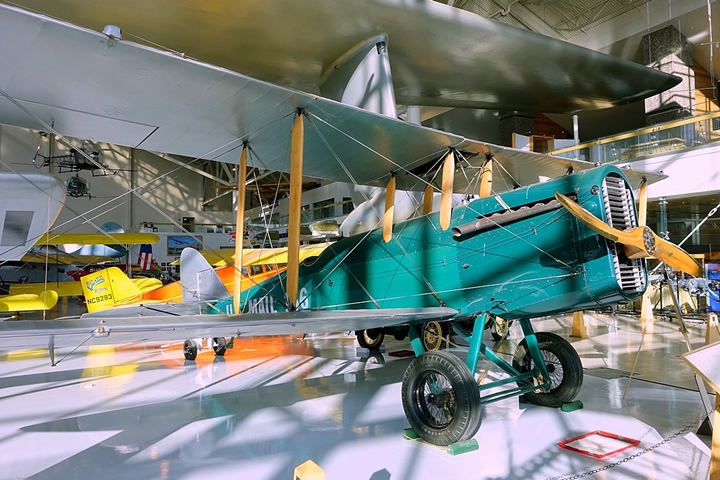
This 1918 Fisher Body-built DH-4 is on
display at the Evergreen Aviation & Space Museum in McMinnville, OR.
The DH-4 was all wood construction, as this
was the state of the art for the worldwide aviation industry during
World War One. The following photos were taken of a Dayton
Wright-built DH-4 fuselage that is on display at the Fantasy of Flight
Museum in Polk City, FL. This aircraft is awaiting restoration,
allowing visitors to view the construction methods used in World War One
aircraft. Fisher Body Fleetwood built 2,000 aircraft just like
this one.
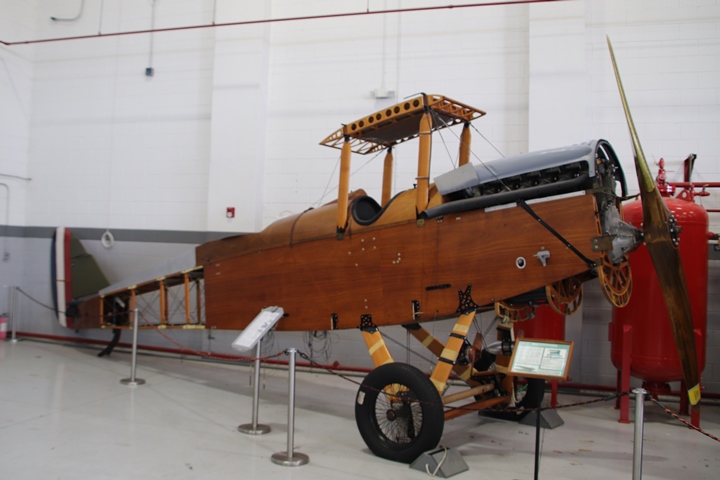
Author's photo.
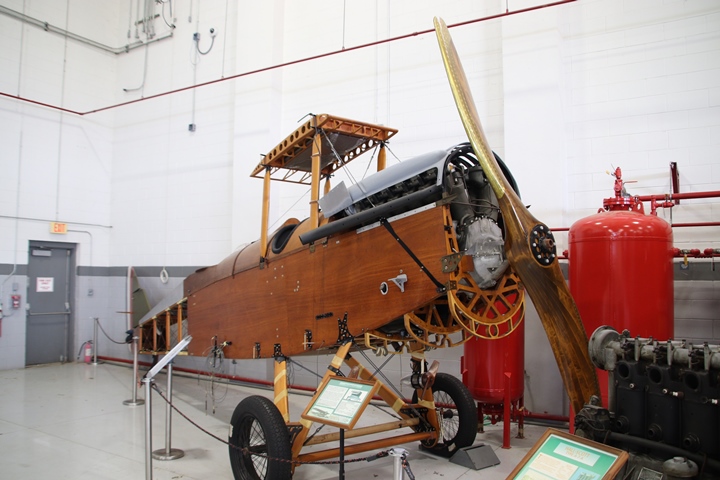
Author's photo.
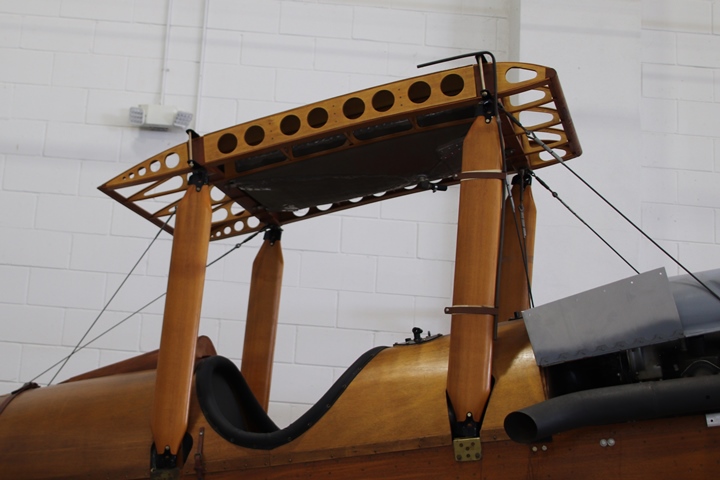
Author's photo.
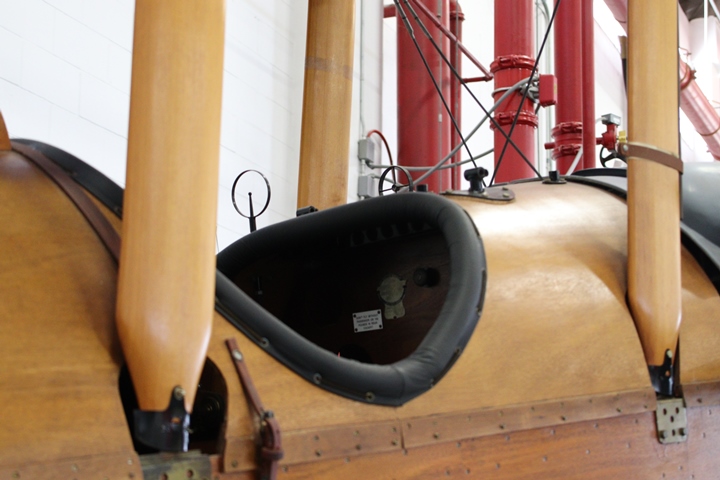
Author's photo.
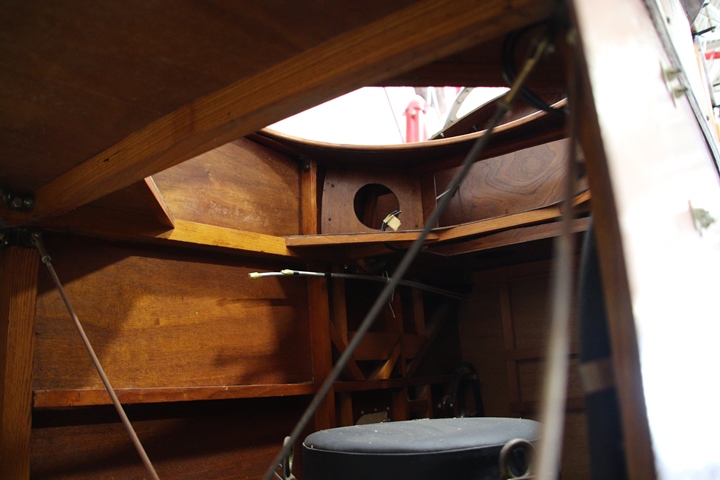
Author's photo.
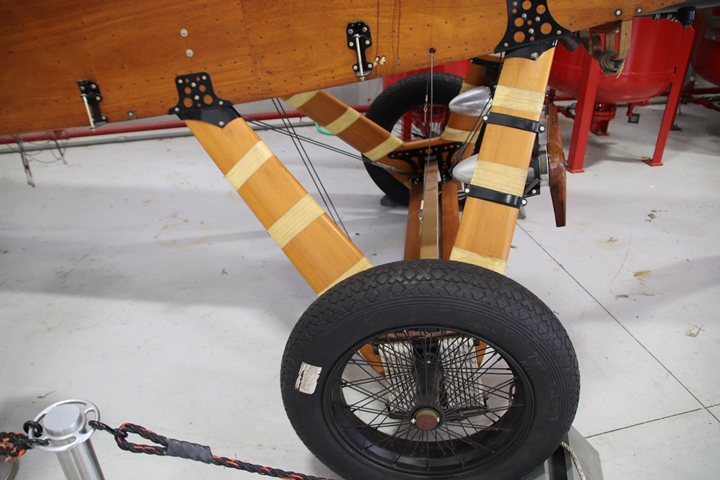
Author's photo.
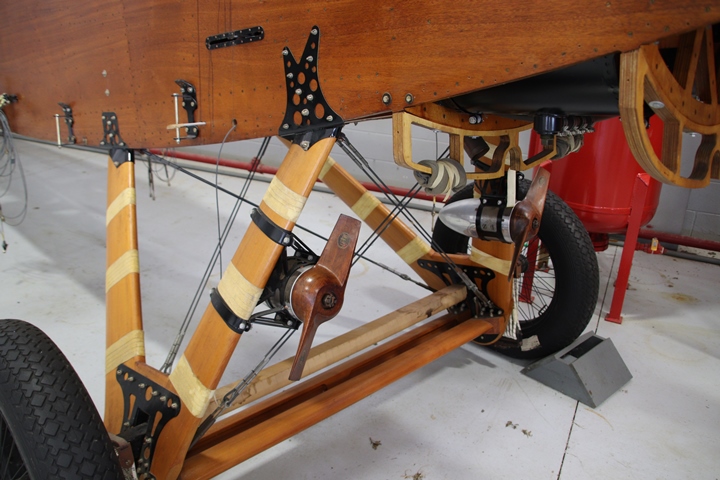
Author's photo.
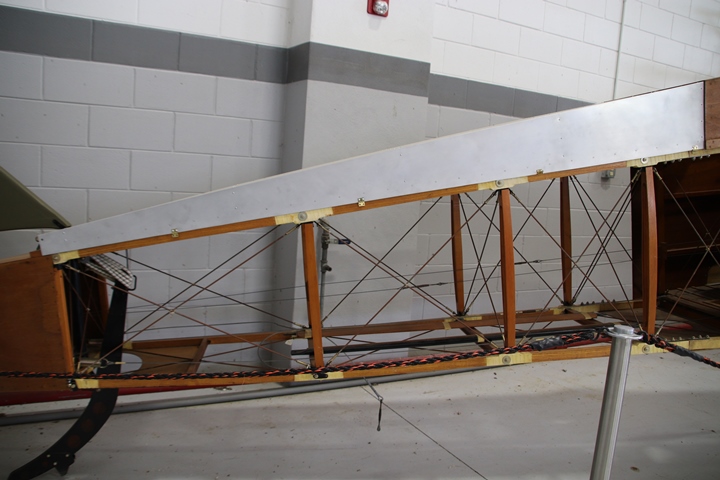
Author's photo.
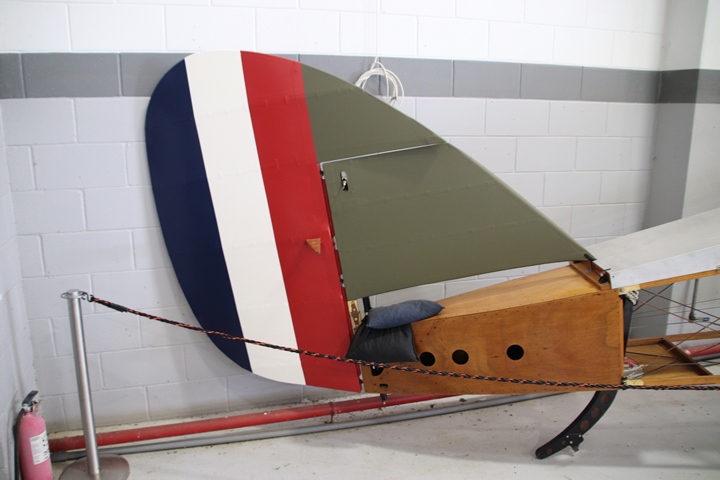
Author's photo.

The Fisher Body Fleetwood Plant in Detroit, MI won the Army-Navy "E"
Award four times during World War Two.
World War Two Products: B-17 exhaust collectors and engine
cowlings, B-25 exhaust collectors, B-29 exhaust collectors, XP-75
exhaust collectors and exhaust stacks,
XB-19 and XB-39 aircraft parts and assemblies; M4, M10, and M26 tank
parts; aircraft drop fuel tanks; P-80 aircraft tools; 90mm AA Guns
tools; Combat Vehicle Parts
The Fisher Body Fleetwood plant was built in
1917 to make wooden aircraft. By the time World War Two arrived
for the United States in December 1941, wooden aircraft were obsolete,
except for the DeHavilland Mosquito. By 1941, aircraft were built
using metals like aluminum and steel. Fisher Body Fleetwood
manufactured steel and aluminum components for the B-17, B-25, B-29, and
XP-75. There had been a major technology shift in the 23 years
since the end of World War One.
B-17 Exhaust Collectors and Engine
Cowlings:
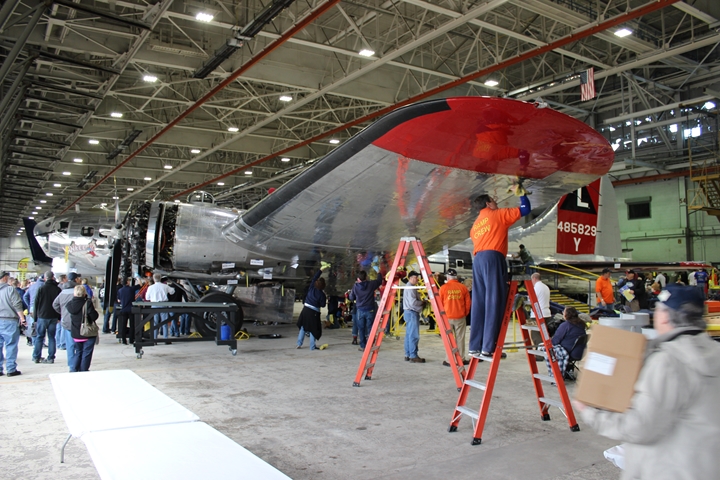
The B-17G "Yankee Lady" is being polished
for another airshow season. The cowl flaps and exhaust collectors
on this aircraft could very well have been built by the Fisher Body
Fleetwood plant which was located 22 miles to the north east of this
hangar at the Willow Run Airport in Bellevue, MI. Author's photo.
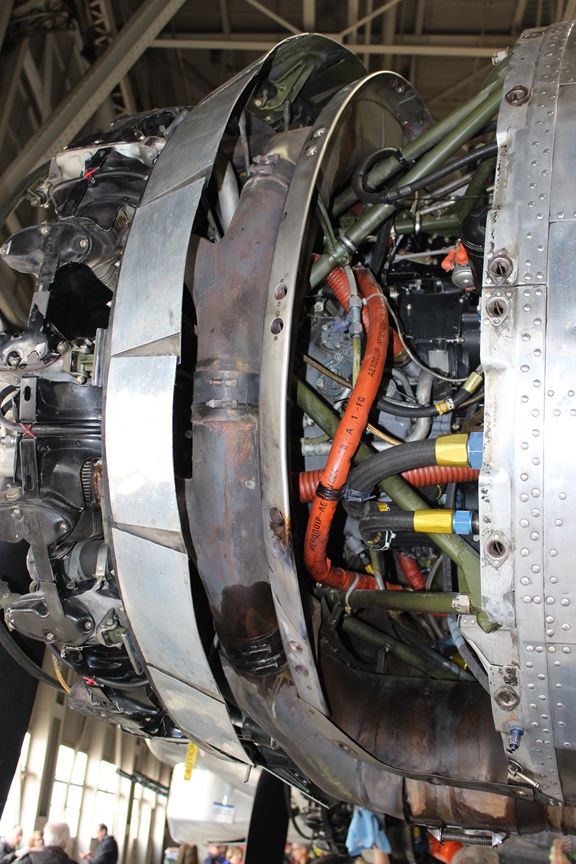
The removable portion of the engine cowl has
been removed on this engine. The cowl flaps and exhaust collector
are on the left portion of the engine. On the right portion is the
fixed portion of engine cowl. Author's photo.
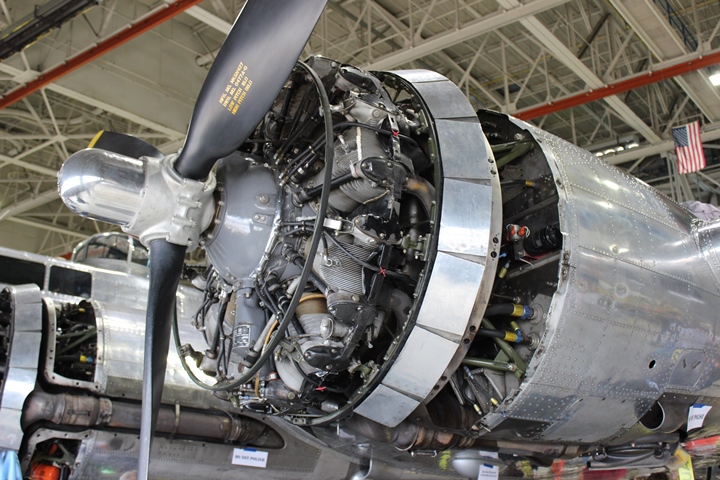
This image shows the individual exhaust
collectors coming off of each cylinder. The cowl flaps can also be
seen. Author's photo.
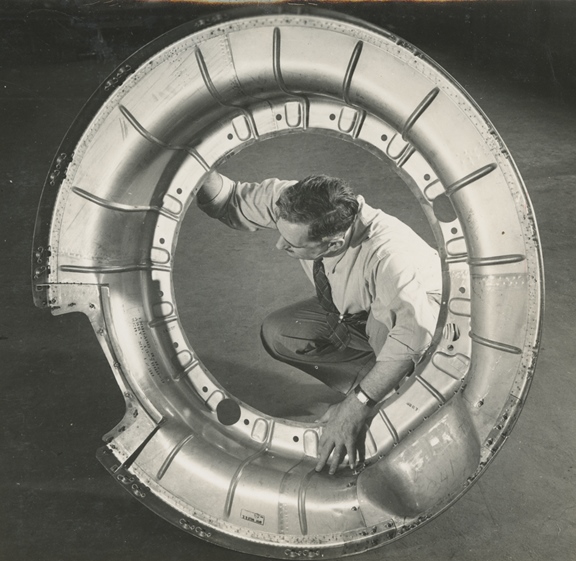
This is a portion of a
B-17F cowl assembly being inspected at the Fleetwood plant.
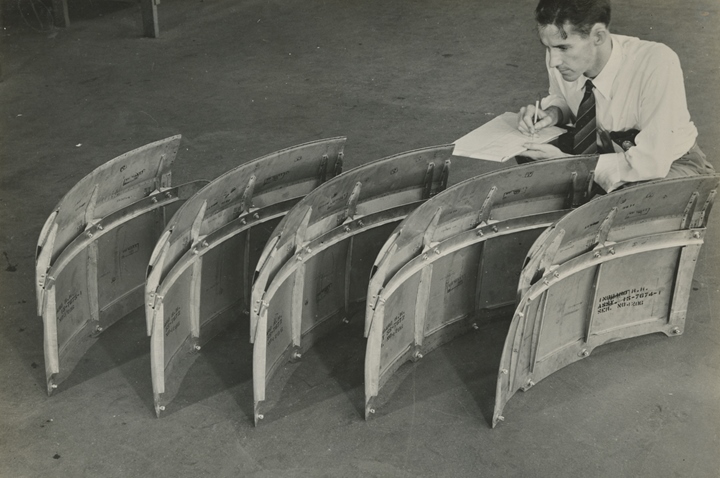
Four sections of B-17 engine cowling
sections are shown in this photograph.
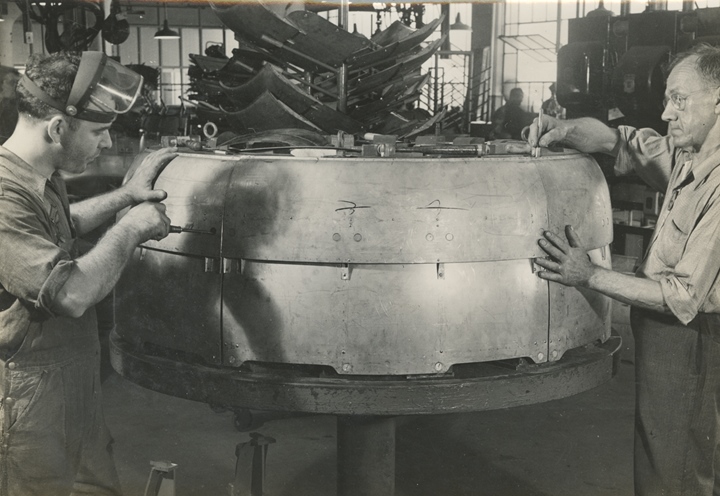
Workers are assembling a section of B-17
engine cowls.
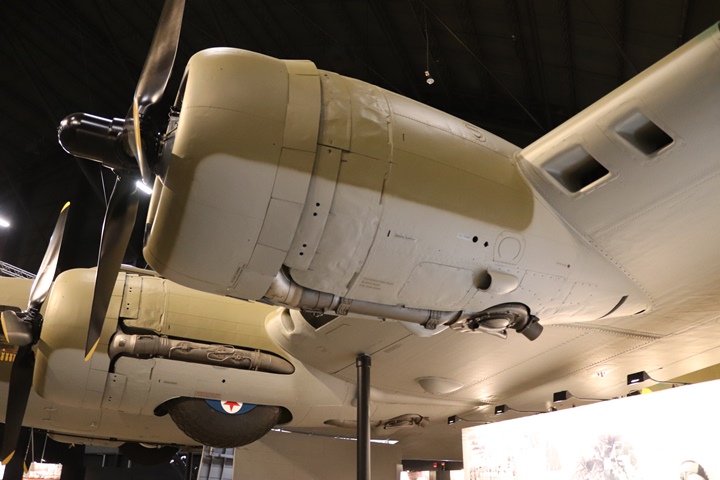
This image shows a fully cowled engine on
the B-17F "Memphis Belle." Note that the exhaust pipes on the
outboard and inboard engines are routed differently due to the landing
gear. Fisher Body Fleetwood made two different types of exhaust
collectors for the two different engines. Author's photo.
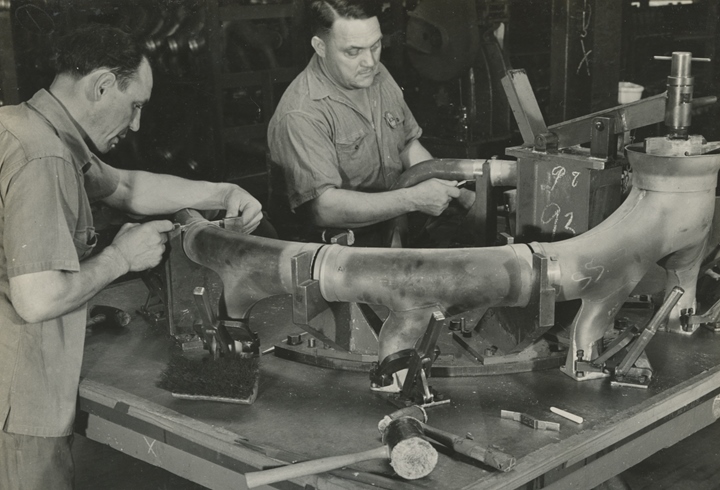
Two Fleetwood workers are using a fixture to
assemble a B-17 collector.
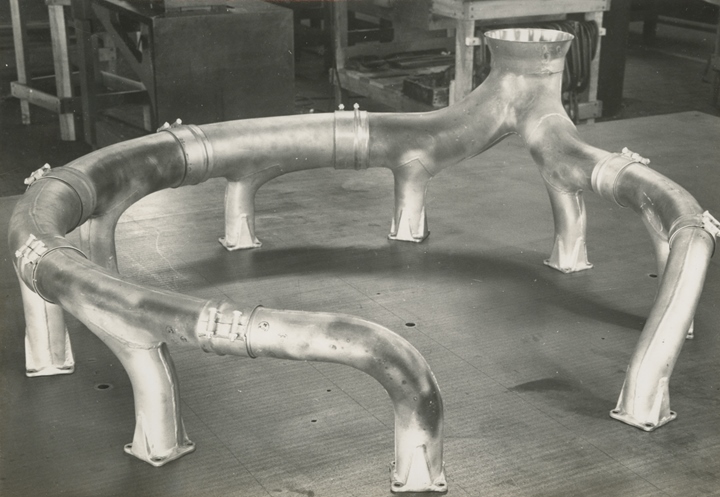
This image shows a fully assembled B-17
exhaust collector ring.
|
Table 1 -
Fisher Body Fleetwood Plant B-17 Exhaust Collector and Cowl
Assembly Production |
|
Month |
Exhaust Collectors |
Cowl Assemblies |
|
1942 |
|
|
| March
|
106 |
2 |
| April
|
135 |
39 |
| May
|
177 |
46 |
| June
|
189 |
26 |
| July
|
187 |
- |
|
August |
199 |
56 |
|
September |
146 |
317 |
|
October |
212 |
50 |
|
November |
176 |
218 |
|
December |
139 |
167 |
|
1942 Total |
1,666 |
921 |
|
1943 |
|
|
|
January |
264 |
407 |
|
February |
335 |
140 |
| March
|
306 |
290 |
| April
|
310 |
323 |
| May
|
484 |
150 |
| June
|
445 |
214 |
| July
|
320 |
482 |
|
August |
515 |
398 |
|
September |
404 |
556 |
|
October |
323 |
775 |
|
November |
369 |
640 |
|
December |
666 |
1,003 |
|
1943 Total |
4,471 |
5,378 |
|
1944 |
|
|
|
January |
331 |
923 |
|
February |
414 |
1,146 |
| March
|
520 |
1,008 |
| April
|
377 |
985 |
| May
|
496 |
876 |
| June
|
493 |
1,050 |
|
1944 Partial Total |
2,631 |
5,988 |
|
Grand
Total as of June 1944 |
8,768 |
12,287 |
The known records for Fisher Body Fleetwood's
production are only complete through June of 1944. The plant
continued to make the two products until B-17 production stopped in mid
1945.
B-29 Exhaust Collectors:
Table 2 shows the anticipated production
schedule for B-29 exhaust collectors. This schedule may well have
increased as the B-29 schedule increased as the war progressed.
Table 2-
Fleetwood B-29 Project
Exhaust Collector Scheduled Production
As of February 1944. |
|
B-29 Assembly Plant |
Boeing-Renton, WA |
Boeing-Wichita, KS |
Bell-Marietta, GA |
Martin-Omaha, NE |
Total |
|
Exhaust Collectors |
2,666 |
460 |
882 |
739 |
4,747 |
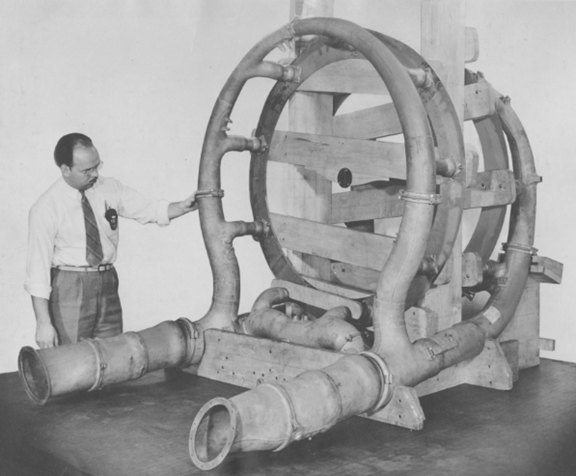
The B-29 exhaust collector was an order of
magnitude larger than that of the B-17 types. Each exhaust pipe
powered a General Electric turbo supercharger.
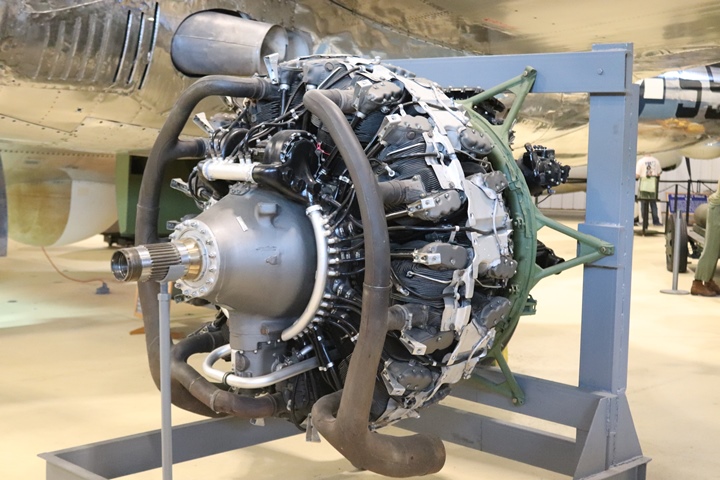
This R-3350 B-29 engine is on display at the
New England Air Museum at Windsor Locks, CT. The display has the
front exhaust collector attached to it. Each R-3350 had 18
cylinders. B-17 R-1820 engines had nine cylinders. Author's
photo.
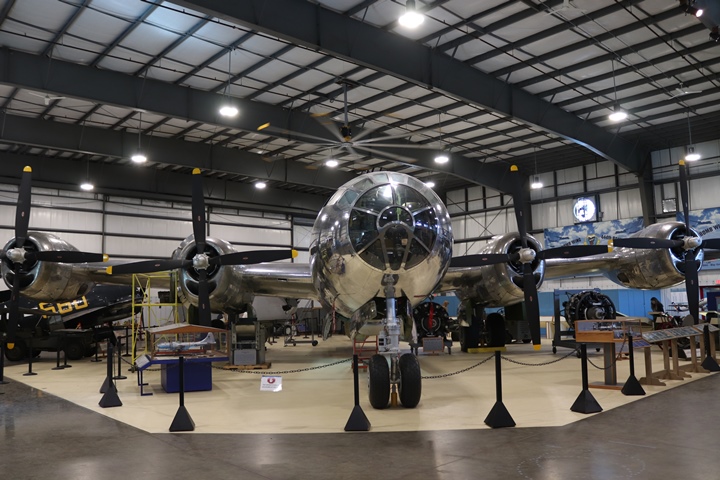
The Museum built a special display hangar to
display its B-29 named "Jack's Revenge." Author's photo.
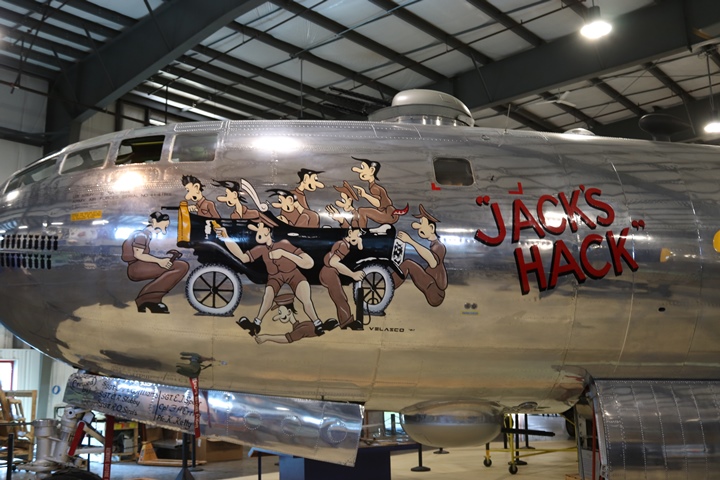
Author's photo.
B-25 Exhaust Collectors: Fisher
Body Fleetwood made 3,975 sets of B-25 exhaust collectors for the war
effort. Due to a shortage of the specified nickel-chromium base
alloy Inconel, the collectors were made out of stainless steel.
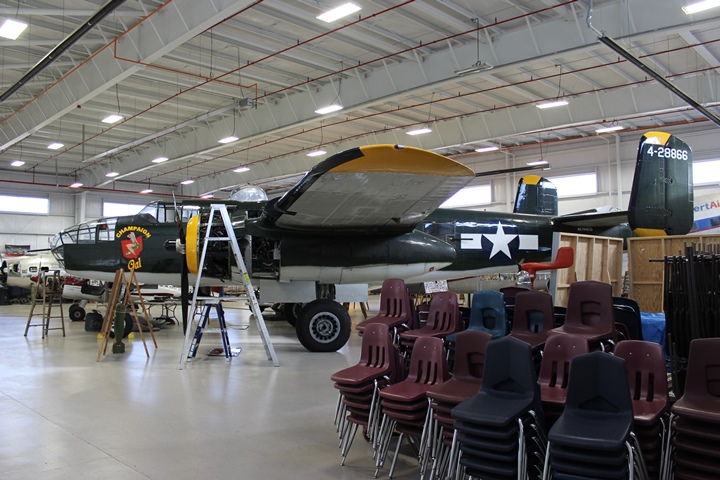
B-25 "Champaign Gal" is owned and operated
by the Champaign Aviation Museum, Urbana, OH. Author's photo.
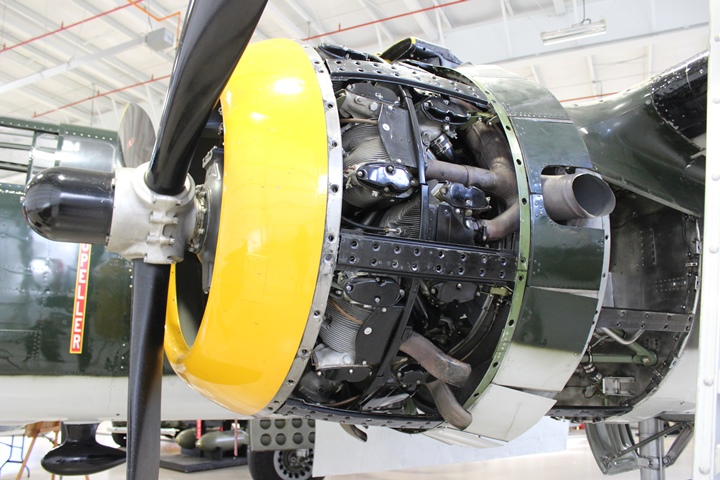
The exhaust stacks on the B-25 are different
than on the B-17 and B-29. This image of the outboard side of the
port engine shows a small exhaust collector to the front and above the
exhaust outlet. The collector is not connected to all of the
cylinders. Many of them have short exhaust stacks like the two
shown at the bottom of the engine. Author's photo.
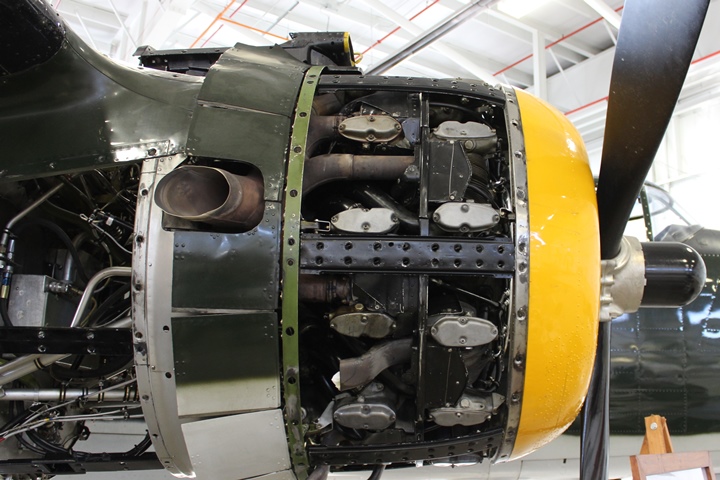
This photo shows the exhaust collector on
the outboard side of the starboard engine. Author's photo.
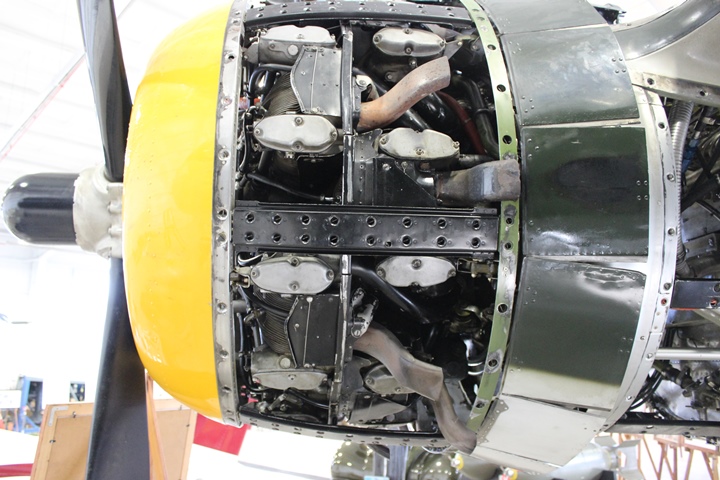
Shown here is the inboard side of the
starboard engine. There are four short exhaust stacks and no
collector. Author's photo.
The B-25's exhaust system contributed to it
being a very noisy aircraft for the crew. Also, because the
exhaust was not run through a turbo supercharger, this contributed to
the noise level in the aircraft. The B-25's noisy exhaust caused
many crewmen to become deaf after the war.
XP-75 and P-75 Components:
The Fisher Body Cleveland, OH Plant #2 built a handful of fighter
aircraft. In retrospect, it was one of those projects that fall
into the category of "it sounded like a good idea at the time."
Eight XP-75s and six P-75s were built using components from several
other fighter aircraft already in production to save costs. By the
time design work and tooling were completed, there were enough of other
fighters types being produced to meet the requirements of the Army Air
Forces. Therefore, the project was cancelled in late 1944.
Besides that, it wasn't that great of an aircraft. Hindsight is
always 20-20!
Fisher Body Fleetwood was assigned to furnish exhaust collectors
and stacks, reduction gear mounts, cartridge boxes, and empty shell
casing ejector chutes. Fleetwood supplied these component for the
fourteen aircraft that were built.
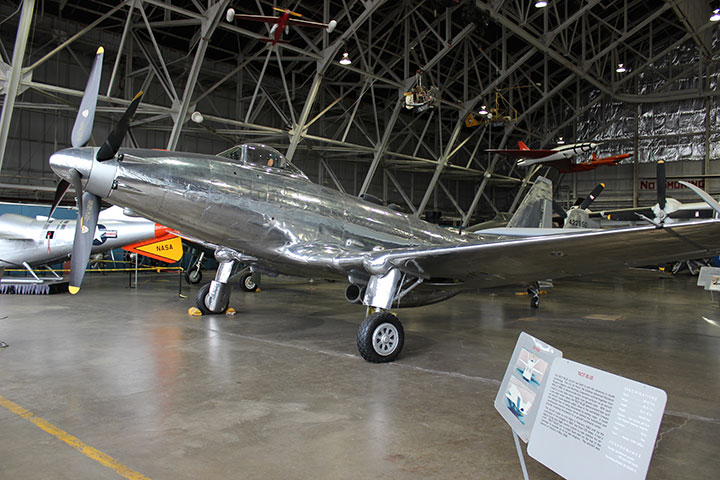
One Fisher P-75 Eagle still exists today
and is part of the collection of aircraft at the National Museum of the
United States Air Force in Riverside, OH. Author's photo.
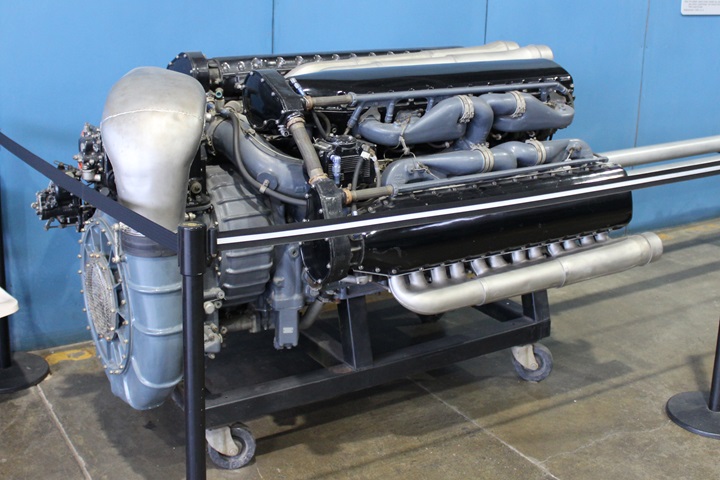
The engine of choice for the P-75 was the
Allison V-3420. Three of the four Fleetwood-produced exhaust
collectors for that engine are shown in this photo. A complete
exhaust can be seen on the side of the engine and two collector pipes
can be seen at the top. This engine is at the National Museum of
the United States Air Force. Author's photo.
Fighter Aircraft Drop Tanks:
Fisher Body Fleetwood was one of many companies that produced
disposable fuel drop tanks for both Army and Navy fighter aircraft.
The drop tanks shown here are on display at the National Museum of WWII
Aviation in Colorado Springs.
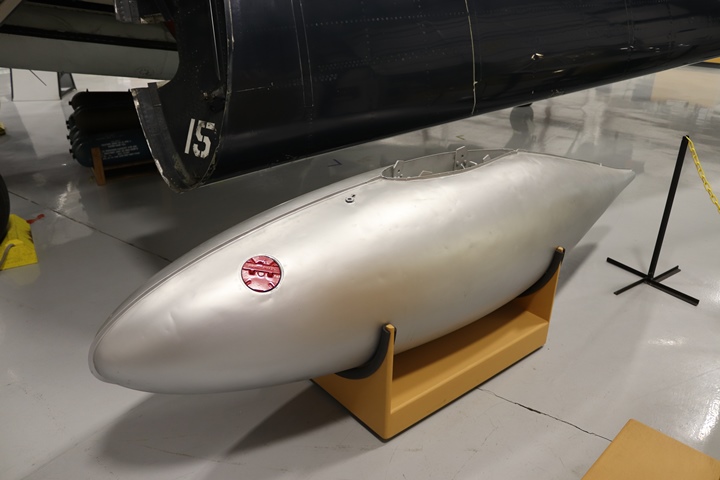
Author's photo.
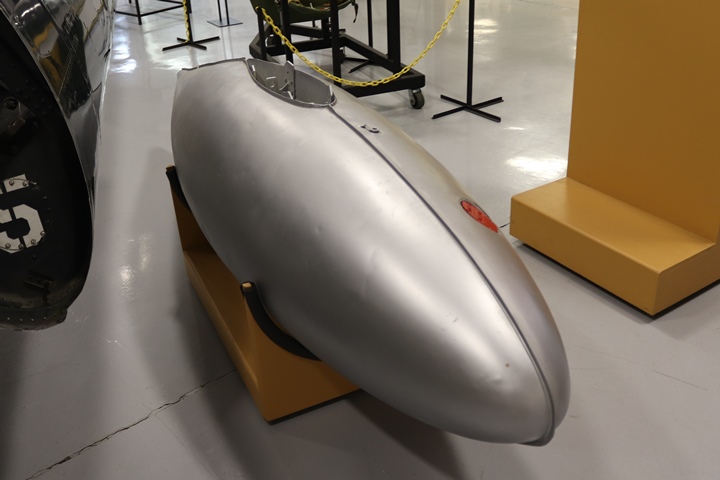
Author's photo.
Tank and Tank Destroyer Components:
Fisher Body produced M4A2 and M4A3 Sherman medium tanks, M10
Wolverine tank destroyers, and M26 Pershing heavy tanks at its tank
plant in Grand Blanc, MI. Fisher Body Fleetwood produced
components for these armored vehicles. The photos below show
representative examples of each of these armored vehicles. All
were built by Fisher Body Grand Blanc.
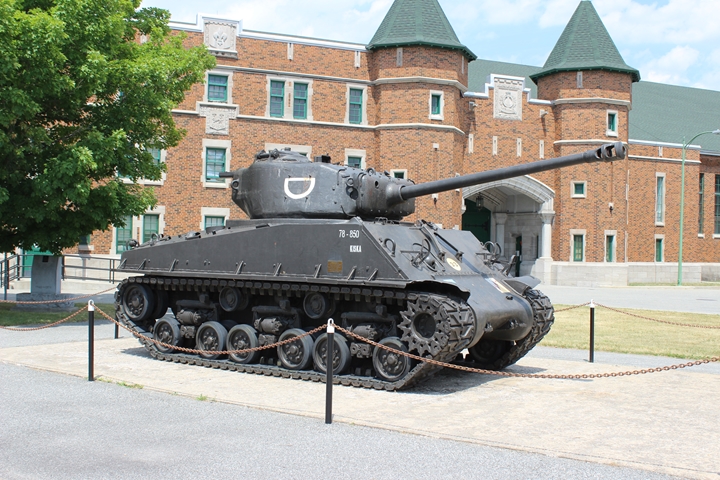
M4A2(76) HVSS Sherman tank. Author's
photo.
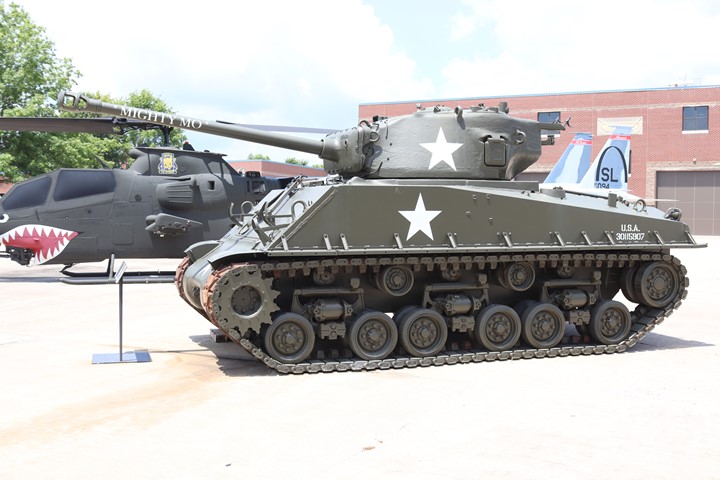
M4A3(76) HVSS Sherman tank. Author's
photo.
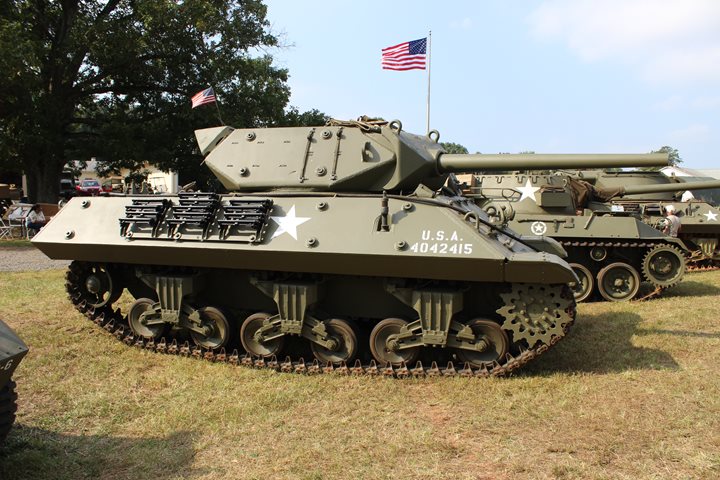
M10 Wolverine tank destroyer. Author's
photo.
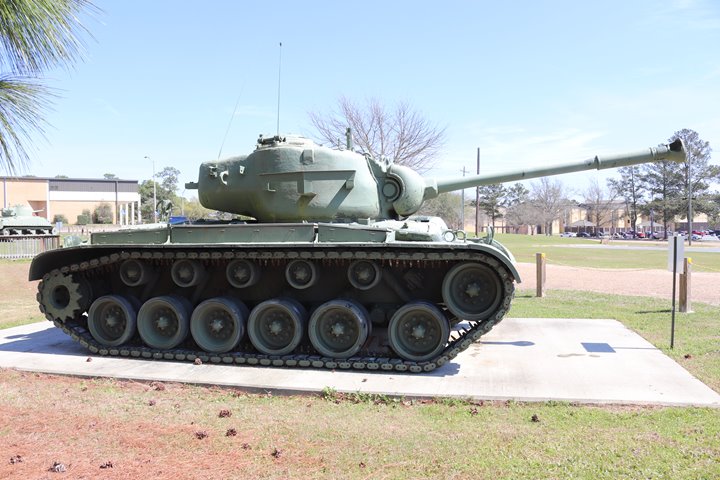
M26 Pershing heavy tank. Author's
photo.
|




































